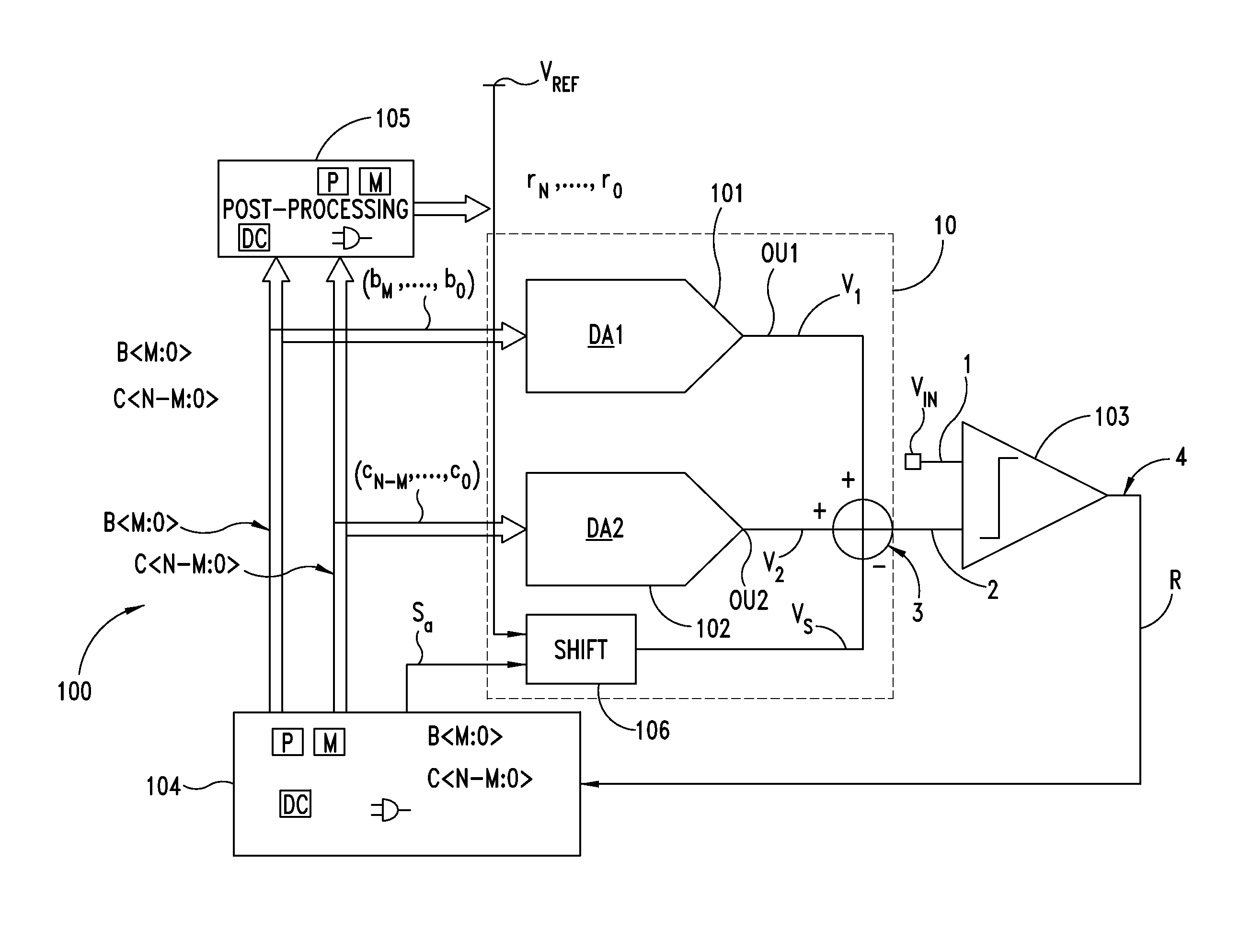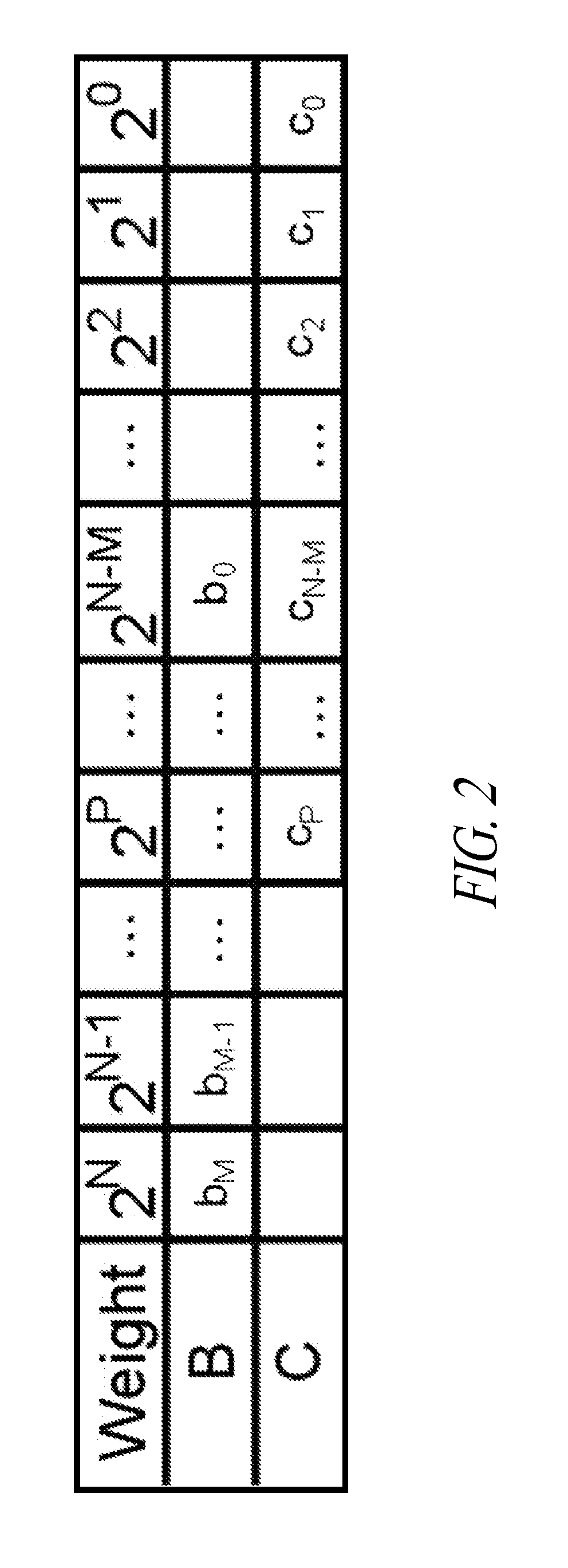Method for digital error correction for binary successive approximation analog-to-digital converter (ADC)
a digital error correction and binary successive approximation technology, applied in the field of analog-to-digital converters (adcs), can solve the problems of meta-stability problems, heavy and time-wasting modifications of the original topology by the designer, and almost always generic redundancy techniques known in the ar
- Summary
- Abstract
- Description
- Claims
- Application Information
AI Technical Summary
Benefits of technology
Problems solved by technology
Method used
Image
Examples
Embodiment Construction
[0039]With reference to FIG. 1, a functional block structure of an N+1 bit Successive Approximation Register (SAR) analog-to-digital (A / D) converter implementing an embodiment of a method is indicated with the reference number 100. In the following, the SAR analog-to-digital converter 100 is also indicated, simply, as A / D converter.
[0040]Such A / D converter 100 can be used in many electronic applications wherein a conversion of analog voltage signals from the analog domain to the digital domain is required, for example in portable communication apparatuses, such as mobile phones, smart-phones or tablets.
[0041]Particularly, with reference to FIG. 1, the A / D converter 100 comprises a digital-to-analog conversion module or converter 10 which comprises a first 101 and a second 102 digital-to-analog (DA1, DA2) conversion block.
[0042]In addition, the A / D converter 100 comprises a register and control logic unit 104 configured to generate a first binary code bM, bM−1, . . . , b0 including M...
PUM
 Login to View More
Login to View More Abstract
Description
Claims
Application Information
 Login to View More
Login to View More - R&D
- Intellectual Property
- Life Sciences
- Materials
- Tech Scout
- Unparalleled Data Quality
- Higher Quality Content
- 60% Fewer Hallucinations
Browse by: Latest US Patents, China's latest patents, Technical Efficacy Thesaurus, Application Domain, Technology Topic, Popular Technical Reports.
© 2025 PatSnap. All rights reserved.Legal|Privacy policy|Modern Slavery Act Transparency Statement|Sitemap|About US| Contact US: help@patsnap.com



